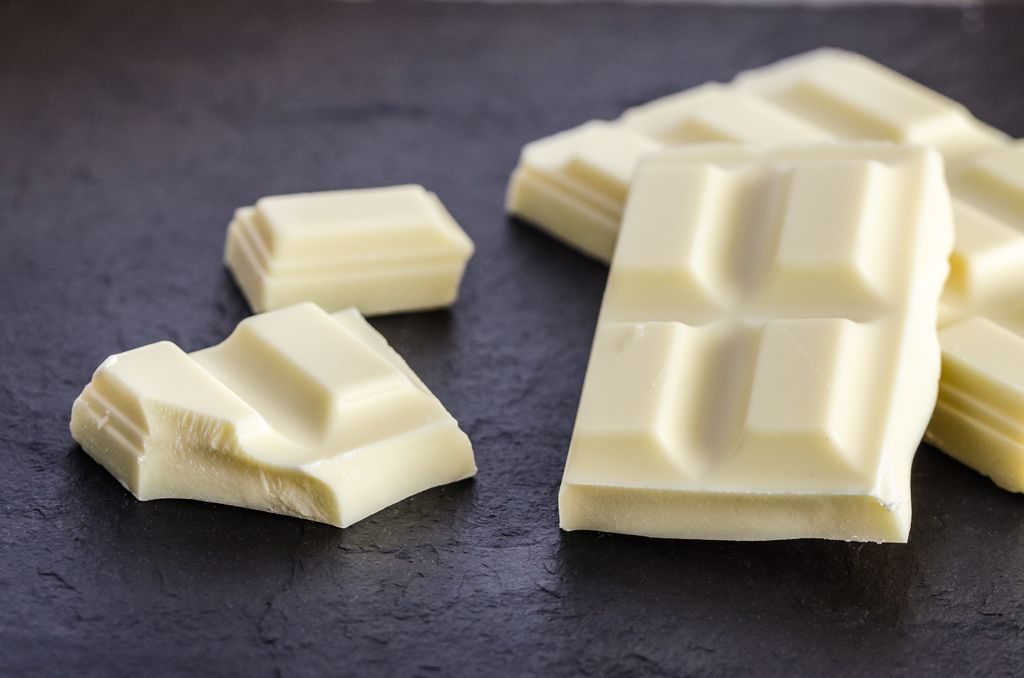White chocolate
White chocolate is a great addition to a huge variety of baking and desserts.

White chocolate gets its name because, well it’s white… not very original I know but it does the trick. White chocolate gets its colour from the removal of the dark coloured solids of the cocoa bean leaving only the cocoa butter. Sugar and milk solids are then added to the cocoa butter to make the final product, it can also contain extra ingredients live vanilla or orange for extra taste.
White chocolate has a sweet and creamy taste, making it a great complementary flavour in such recipes like white chocolate and raspberry cheesecake, buttercream icing.
Melting white chocolate
Melted white chocolate can be used in many different ways; you can drizzle it onto fruit, if you add cream you can make a ganache, or you can even use it to make a white chocolate mousse!
White chocolate can be a bit tricky to melt, if you heat it too quickly it can clump, too high a temperature it can burn. The key to success is in the preparation.
- First, make sure your chocolate is chopped up into small pieces.
- With a microwave, you can heat at a low temperature for 30 seconds at a time.
- When it is a smoothly-melted consistency remove it from the microwave and it is ready to use.
If you don’t have a microwave you can melt the chocolate in a Bain-Marie (a small amount of water in a pot which heats a bowl placed on top). Stir gently until melted.
Nutrition of white chocolate
White chocolate isn’t particularly good for you, this is because when you remove the cocoa you remove all the benefits. There are about 539 calories per 100 grams of white chocolate and It also contains a high amount of sugar. For a more beneficial alternative try dark chocolate that has a minimum of 70% cocoa. It contains antioxidants that can help with lowering blood pressure.
Traditionally white chocolate contains milk solids so it is not vegan but you can find some similar vegan-friendly brands.




